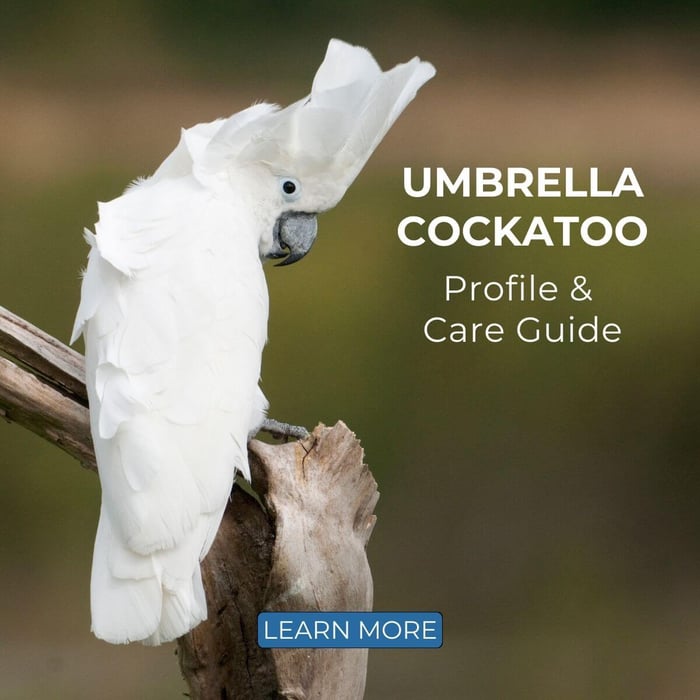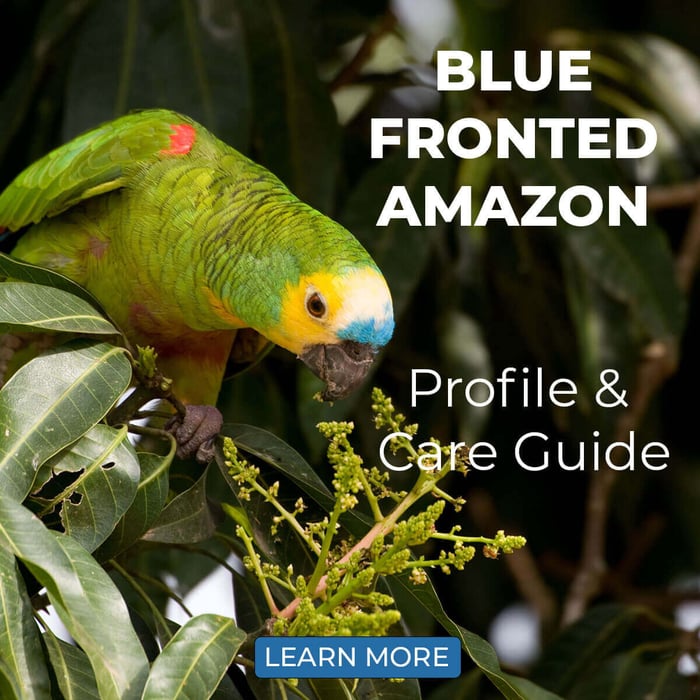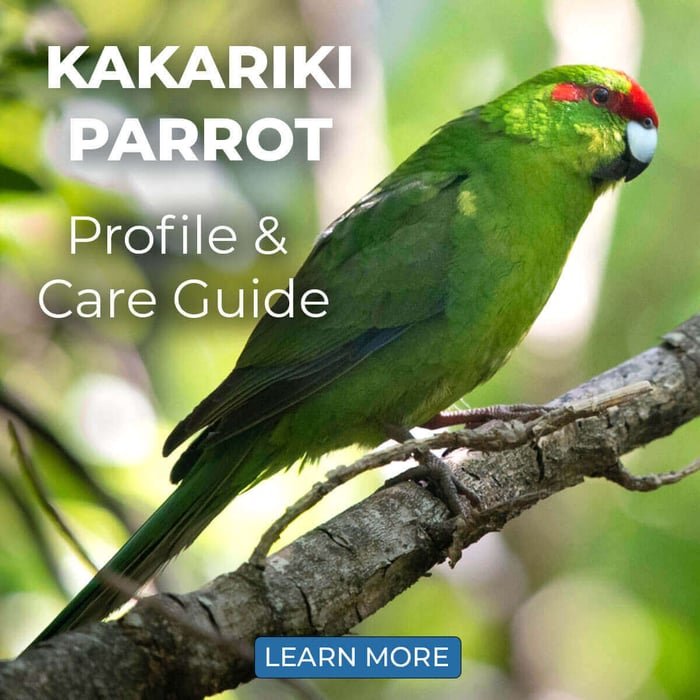Dusky Conure - Profile & Care Guide
| Common name: | Dusky conure, dusky-headed conure, Weddell's conure |
| Scientific name: | Aratinga weddellii |
| Length: | Up to 30 cm |
| Weight: | Up to 120 grams |
| Lifespan: | 30+ years |
| Origin: | Western Amazon basin |
| Noise Level: | Medium |
NATURAL HABITAT

The Dusky Conure, scientifically known as Aratinga weddellii, is naturally found in western South America. The species is native to tropical Colombia, Ecuador, Peru, Bolivia, and western Brazil. Here, it mostly prefers riparian forests with a maximum altitude of around 750m. It tends to avoid areas with overly dense vegetation.
Dusky conures have been noted not to be too picky about habitat. Whereas some other native rainforest species are disappearing as a result of deforestation for agriculture, the IUCN Red List has noted that Aratinga weddellii is not threatened. In fact, the population appears to be on the increase.
These parrots can be found in groups ranging from small family units to dozens of birds in tree-dotted swamps, savannas, várzea (seasonal floodplain forest), clearings, and agricultural plantations.
DUSKY CONURE INTELLIGENCE & PERSONALITY
Dusky-headed conures aren't the most popular of conures, likely due to their more subdued colouration. We think that's a shame! They can make delightful pets for the right owner, and they can be just as smart as larger birds. They've got excellent problem-solving skills, which help them forage effectively in the world and come in handy for teaching them fun tricks in captivity.
In addition to their intelligence level, dusky conures also boast big personalities. They thrive on attention and form close bonds with their human "flock". Each bird has its own personality, but generally speaking, you can expect a dusky conure to be boisterous, playful, and affectionate. However, they don't tend to be as hyperactive as their close Aratinga cousins.
Do keep in mind that their big brains and playful natures mean that dusky conures are decidedly not suitable for people looking for a "hands-off" pet. They need almost constant attention to meet their social needs! A bored conure is a stressed conure, which can lead to issues like feather plucking, excessive vocalization, and even aggression.
If you work a regular 9-5 job, it's usually best to get two parrots. Contrary to popular belief, getting a pair doesn't mean you won't be able to bond with them as closely; it all depends on socialization and training, which are crucial to a happy dusky conure anyway. Spending 15 minutes a day training your parrot can really help you encourage desirable behaviours. It also strengthens your bond with your bird.
DUSKY CONURE NOISE LEVEL & TALKING ABILITY
Although it all comes down to the individual, dusky-headed conures are considered relatively moderate when it comes to noise level. Most parrot owners report them to be less raucous than other Aratinga conures—most members of this genus, like the sun conure, are infamous for their extremely piercing shrieks.
This being said, keep in mind that "moderate" means "moderate for a parrot". If you'd like a quiet bird, you're better off looking at doves or similar, because all parrots are loud to some degree! Dusky conure calls are a mix of chirps interspersed with sharper squawks (flock calls), usually during play or when they're trying to connect with their (human) flock mates. They tend to vocalize during dawn and dusk in particular.
As for talking ability, dusky conures can learn to mimic, though their voices aren't very clear. They can learn a few words and phrases, as well as tunes and household sounds like the telephone ringing. If your bird likes to imitate sounds, you can encourage it through patient repetition.
Tip: Although parrots will always be loud, there are ways to help manage their noise levels. A busy conure is a (relatively) quiet conure, so make sure your dusky has plenty of toys and keep it occupied foraging. Excessive vocalization can be a sign of boredom and frustration!
FEEDING & NUTRITION FOR YOUR DUSKY CONURE
Wild dusky conures eat a varied diet of all sorts of seeds, wild fruits, berries, flowers and buds. They even forage for insects! Your pet dusky conure will thrive on a similar level of variety, even if it's not possible to offer the foods it would naturally eat (like palm fruits).
The cornerstone of your dusky-headed conure’s diet should be a high-quality pellet food for medium-sized parrots. Pellets look boring, but they are specifically formulated to provide all the necessary nutrients. They're a healthier choice than seed-based diets, which can be high in fat and are associated with nutrient deficiencies.
To keep your conure’s diet interesting, you should regularly introduce a variety of fresh foods. Fresh vegetables and fruits are important; they not only contain important vitamins, but also help keep your bird excited for mealtimes. Offer vegetables like carrots, peas, and broccoli daily, and give fruits such as apples and berries a few times a week. Be careful; things can get messy, but that's half the fun for your bird.
Aside from fresh produce, you can also include a seed mix (sprouted seeds are particularly nutritious), as well as cooked whole grains like whole-wheat pasta and brown rice. Your dusky conure can even have some lean protein from time to time, like in the form of a boiled egg.
Always ensure that fresh water is readily available. Clean food and water bowls daily. You can add a source of calcium, like a cuttlebone, to support bone health and beak strength.
Tip: We highly recommend presenting food in a foraging setting where possible. It's a great way to stimulate your conure’s mind and mimic its natural feeding behaviours. Use foraging toys or a foraging box to encourage your bird to search and work for its meals.
HOUSING FOR YOUR DUSKY CONURE
Did you know that pet parrots actually appreciate having a cage to call their home, even if they're allowed to enter and exit at will? The enclosed space makes them feel safe, especially for nap time or to sleep at night. However, it's crucial to make sure the cage is large enough and to let your bird out as often as possible.
A good rule of thumb is a cage at least 30 inches wide. Larger is always better; if your bird will spend most of its time in its enclosure, you may want to think about investing in an indoor aviary. The cage should be placed in a part of your home that gets some traffic but isn't too chaotic, away from direct light or drafts. Ensure the bar spacing is no more than 0.5", as these curious parrots can get their heads stuck in wider bars.
We've talked before about the importance of enrichment for your parrot. It won't come as a surprise, then, that a bare cage won't cut it! Firstly, you should provide a variety of perches of different diameters, materials, and textures to promote foot health and to double as chew toys. Additionally, include foraging toys, chew toys, puzzles, and bells to cater to these conures' playful nature and cognitive needs. Rotate toys regularly to keep them exciting. You can also add a bathing dish.
For out-of-cage time, you can install a play gym on top of the cage. Include some toys, as well as food and water dishes, for a fully functional hang-out spot.

FEATHER PLUCKING IN DUSKY CONURES
Feather plucking in dusky-headed conures is less common than in some larger parrots, like cockatoos. Still, it can happen as a result of stress, boredom, or underlying health issues. You may be tired of us saying this by now, but to prevent this behaviour, it’s essential to provide a stimulating environment that includes interactive toys, opportunities for social interaction, and daily out-of-cage time.
A balanced diet enriched with all necessary nutrients also plays a crucial role in maintaining healthy plumage. If you notice your conure over preening or pulling out its feathers, consult with a veterinarian to help determine the cause and get advice on how to stop the behaviour.
FACTS
- Dusky conures are considered by many to be one of the calmest members of the genus Aratinga. Most well-socialized duskies are quite gentle and don't mind being handled.
- The dusky head this conure was named for is unique: Aratinga weddellii is the only species in its genus that sports grey colouration on its head.
- Like many other parrots native to the Amazon basin, dusky conures have been observed visiting clay licks. Eating the soil here allows them to ingest important minerals and protect their gastrointestinal system from toxins and parasites.
- A phylogenetic analysis published in 2023 reveals that the dusky conure is likely the original ancestor for the genus Aratinga as a whole, as well as the extinct North American Carolina parakeet.
- A 2001 study found that the purple coral tree (Erythrina fusca) depends on the dusky conure and another parrot species, the cobalt-winged parakeet, for pollination.

CONCLUSION
The dusky conure may not be as colourful as many of its Aratinga cousins, but what it lacks in vibrance, it makes up for in personality. These playful parrots are comparatively calm and not quite as loud, making them a good choice if you find other conure species overwhelming.
To view other Parrot Profiles & Care Guides, visit our Alphabetical list of Parrot Fact Sheets by visiting: https://parrotessentials.co.uk/blog/parrot-profiles-care-guides
Sources




